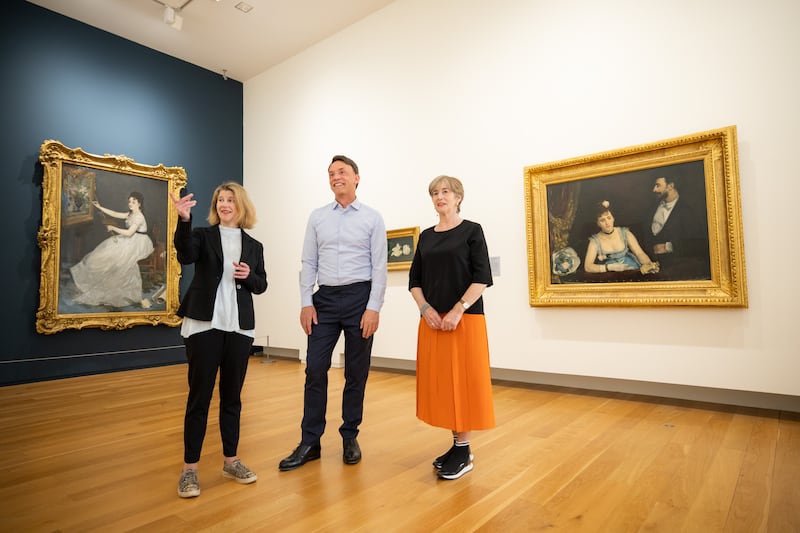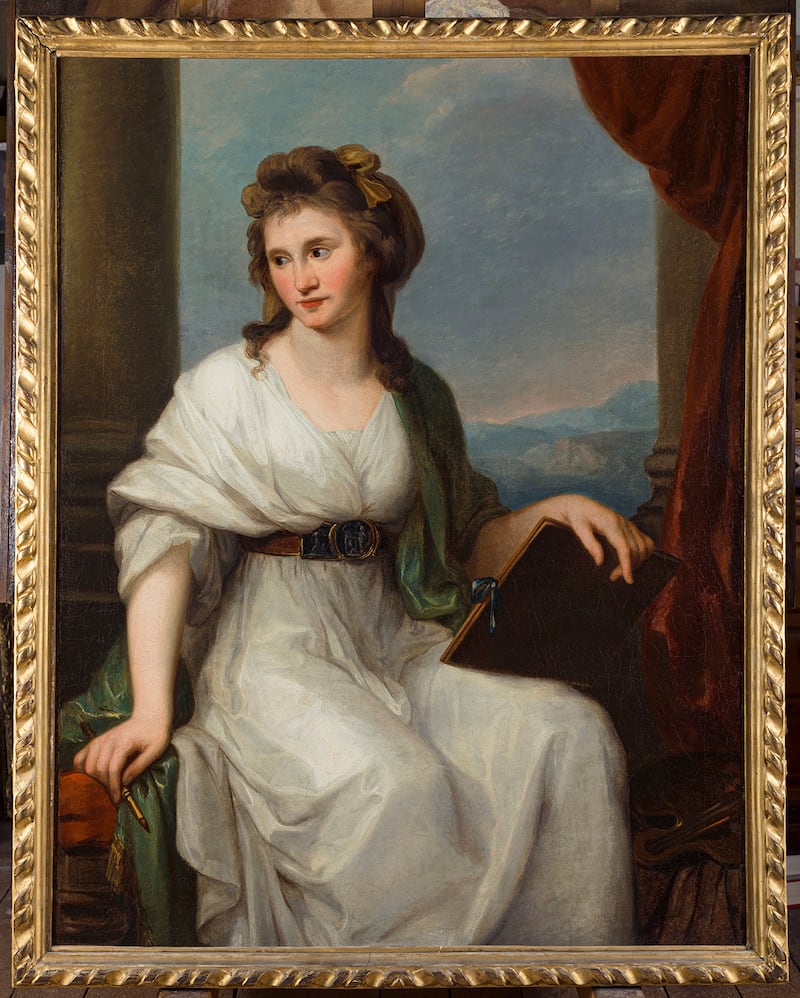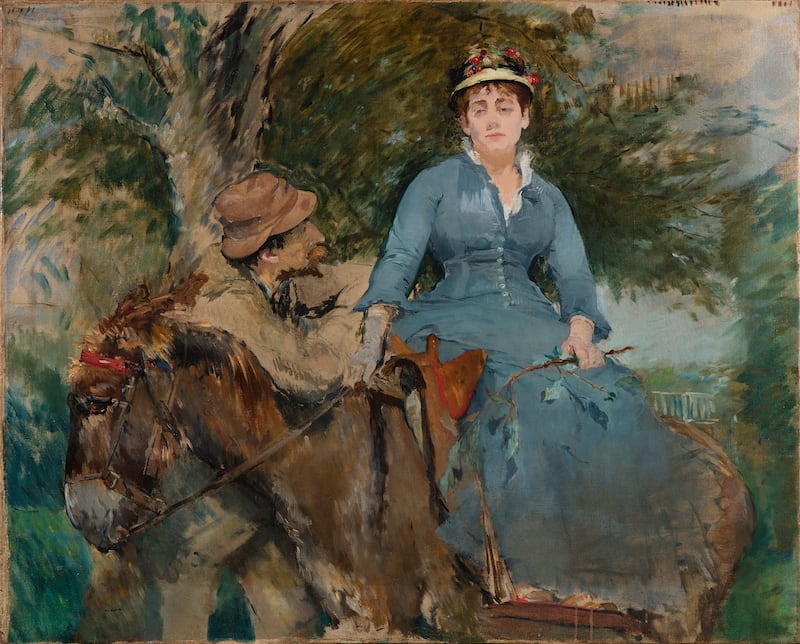Eva Gonzalèz Is What Dublin Needs
Dublin City Gallery the Hugh Lane, Parnell Square, Dublin 1
The Hugh Lane’s excellent exhibition Eva Gonzalèz Is What Dublin needs is built around Édouard Manet’s portrait of Gonzalez. The title is a quote from George Moore who suggested, in 1904, that the Manet was a perfect candidate for Hugh Lane’s proposed gallery of modern art in Dublin. Among the works Lane pledged for the collection was assembling, it is also one of the paintings caught up in the dispute over the Lane Bequest. The nub of the issue was the National Gallery London’s churlish refusal to accept Lane’s unwitnessed codicil to his 1913 will. Whatever the legal subtleties, few dispute that Dublin is morally in the right.
Manet’s full-length portrait is a fine, even formidable painting. Seated at an easel, palette in hand, Eva is wearing a white dress with not a paint splash in sight. The floral piece she’s notionally working on, though, is already framed and appears fully finished. Nor is it by her: the show conclusively identifies it as sourced from an engraving of a 17th-century work. Manet’s distinctive, Spanish-influenced use of ivory black — like turning off a light, as Rainer Maria-Rilke later put it — is still evident; he subsequently modulated his palette. Gonzalèz was his only student, and her arrival on the scene displeased Berthe Morisot who he was, and remained, very close to.
As several exhibits confirm, Morisot was surely his ideal model. She pointedly commented on how much trouble he was having completing the portrait of Eva. X-ray studies confirm her impression, revealing many erased versions of the face. The peony blossom at Gonzalèz’s feet is echoed in Manet’s small, very beautiful study of peony blossom and secateurs from the Musée d’Orsay, hung on the wall close by. Also included is William Orpen’s monumental Homage to Manet, a group portrait that includes George Moore, with the Gonzalèz portrait prominently positioned on the wall behind.



Like Mary Cassett, Gonzalèz and Morisot were women in a man’s art world, underestimated and patronised. The show includes one of Gonzalez’s most highly rated works, a close view of a couple at the opera, modelled by her sister Jeanne, also a painter, and her own husband. In a tremendously assured composition, recalling Manet’s The Balcony (which in turn referenced Goya), the couple seem on different wavelengths, misaligned (in fact, following Gonzalèz’s relatively early death, they married). Jeanne was her favourite model, and she features in several other works on view, including a fine, economically stated pastel. A selection of self-portraits by other women, including Angelica Kauffmann and Elizabeth Le Brun, sketchily indicate the changing status of women as artists.
Council to run the rule over Portobello house revival as Hugh Wallace deviates from the plan
Irish WWE star Lyra Valkyria: ‘At its core, we’re storytellers. Everything comes down to good versus evil’
The 2 Johnnies Christmas Party at 3Arena: It’s easy to sneer at the triteness and crudeness, but are 13,000 happy fans wrong?
The Guildford Four’s Paddy Armstrong: ‘People thought I was going to be bitter and twisted when I came out of prison’
It’s not, as you may gather, a tidy show in the sense that there are several variously intersecting strands of inquiry and interest in play throughout: Manet’s work, relationships and friendships, Gonzalèz’s artistic substance, the status of women in art and culture, the Lane Bequest. It is, all the same, an immensely rewarding show once you take the time to absorb the individual works and the network of interconnections. Even the practicalities of acquisition are dealt with: the receipt for the portrait, from the renowned dealer Paul Durand-Ruel, is given its own spot on the wall.
Continues at Dublin City Gallery the Hugh Lane until September 18th, 2022





